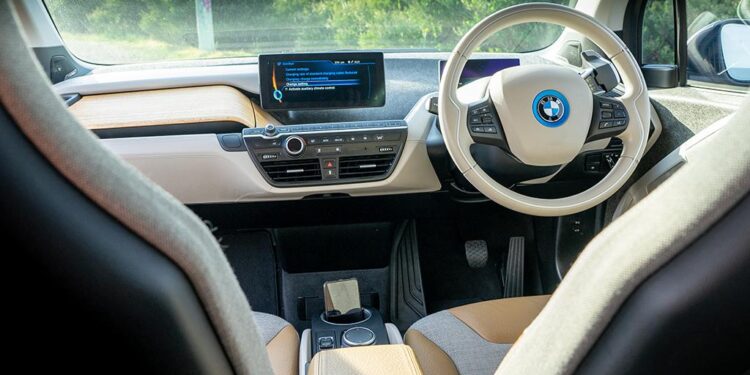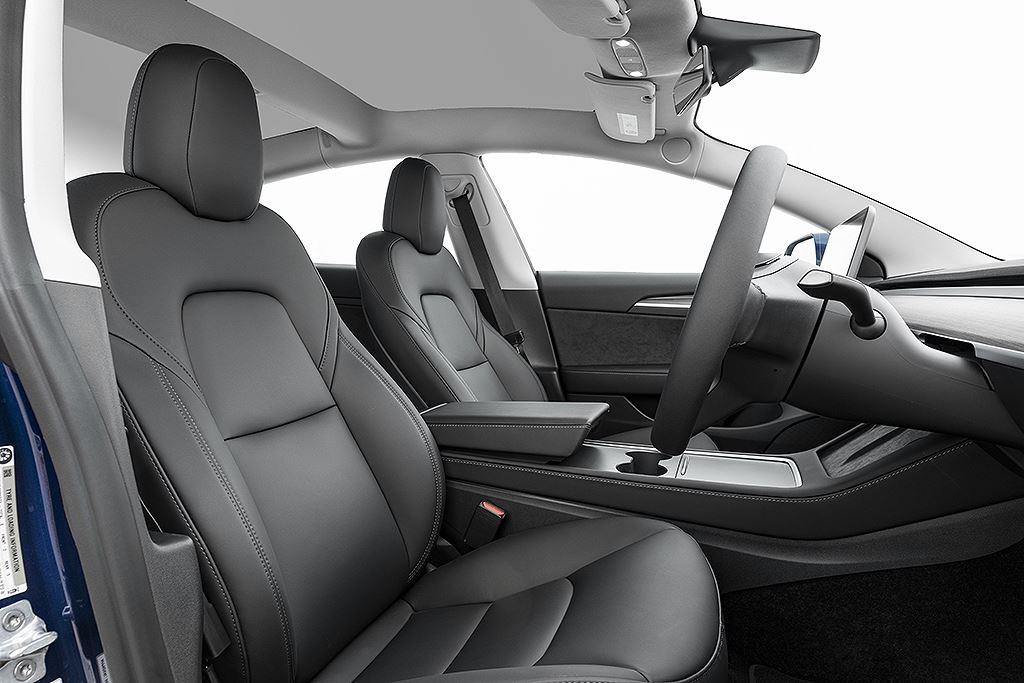As the automotive industry continues to evolve, sustainability has emerged as a core focus for manufacturers. Among the various facets of sustainability in car production, one of the most significant changes is the use of sustainable and recycled materials in car interiors. This trend is a response to growing environmental concerns and increasing consumer demand for eco-friendly products. As manufacturers strive to reduce their carbon footprint, car interiors are being reimagined with a range of innovative materials that not only benefit the environment but also enhance the driving experience.
This article explores the growing trend of using sustainable and recycled materials in car interiors. We will examine the types of materials being used, the benefits they offer, and how they contribute to the overall sustainability of vehicles. Additionally, we will explore the challenges associated with these materials and how they are transforming the future of automotive design.
A. Understanding Sustainable and Recycled Materials
Sustainable and recycled materials are those that have been sourced, produced, or processed in ways that minimize their environmental impact. These materials often come from renewable resources or are repurposed from waste products, reducing the need for virgin raw materials and decreasing the environmental footprint of production.
A.1. Sustainable Materials
Sustainable materials are those that can be produced in an environmentally responsible manner, typically involving the use of renewable resources, energy-efficient processes, and minimal waste. In the context of car interiors, sustainable materials are used to replace traditional, environmentally harmful options such as leather, plastic, and synthetic fabrics. Some examples of sustainable materials include:
-
Bamboo: Bamboo is a fast-growing, renewable resource that is being used in automotive interiors for everything from dashboard panels to floor mats. It is durable, lightweight, and can be processed with minimal environmental impact.
-
Hemp: Hemp is another renewable material being utilized in car interiors, especially in seat upholstery and paneling. Hemp fibers are strong, lightweight, and biodegradable, making them a great alternative to synthetic materials.
-
Cork: Sourced from the bark of cork oak trees, cork is a renewable and biodegradable material that is gaining popularity in car interiors for use in flooring, door panels, and upholstery.
-
Recycled Fabrics: Many car manufacturers are turning to fabrics made from recycled plastics, such as polyester derived from PET bottles. These fabrics offer a sustainable alternative to traditional textiles and can be used in seat covers, carpets, and upholstery.
A.2. Recycled Materials
Recycled materials are products that have been repurposed from waste or discarded items, reducing the need for new raw materials. The automotive industry is increasingly using recycled materials to create car interiors that are both eco-friendly and high-quality. Some examples include:
-
Recycled Plastics: Recycled plastics, such as those sourced from post-consumer waste like plastic bottles, are being used for various interior components such as dashboards, door panels, and trim pieces.
-
Recycled Rubber: Used rubber, often sourced from old tires, is being repurposed for use in car floor mats, seals, and insulation materials.
-
Recycled Metal: Recycled metals, including aluminum and steel, are commonly used in car interiors for structural components, including seat frames and reinforcement bars.
-
Recycled Glass: Some automakers are using recycled glass for elements like window panels and display screens, reducing the need for new glass production.
B. Benefits of Sustainable and Recycled Materials
The adoption of sustainable and recycled materials in car interiors offers a range of benefits for both manufacturers and consumers. From reducing environmental impact to enhancing product performance, these materials are becoming increasingly integral to the automotive industry’s efforts to go green.
B.1. Environmental Benefits
The most significant advantage of using sustainable and recycled materials in car interiors is the reduction in environmental impact. Traditional car manufacturing processes often rely on materials that are resource-intensive and harmful to the environment. By shifting to more sustainable and recycled options, automakers can significantly reduce their carbon footprint and help conserve valuable resources.
-
Reduction in Raw Material Consumption: By using recycled and renewable materials, automakers can reduce the need for virgin raw materials, which require extensive mining, energy, and water usage.
-
Lower Carbon Emissions: The production of recycled materials generally requires less energy than manufacturing new materials, leading to a reduction in overall greenhouse gas emissions.
-
Waste Reduction: By repurposing waste products, automakers help reduce the amount of waste sent to landfills. Recycled materials can be used in various car interior components, diverting waste from the waste stream and turning it into a resource.
B.2. Improved Durability and Performance
Sustainable and recycled materials are not only environmentally friendly, but they also offer improved durability and performance compared to traditional materials. For example, materials like bamboo, hemp, and recycled plastics are often more resilient and durable than their synthetic counterparts, which can contribute to a longer lifespan for the vehicle’s interior.
-
Better Longevity: Many sustainable materials are naturally more durable and resistant to wear and tear. For instance, bamboo is known for its strength, while recycled plastics can be made to have high tensile strength, ensuring they last longer and maintain their integrity.
-
Enhanced Comfort: Some sustainable materials, like organic cotton or recycled fabric blends, are breathable and comfortable, enhancing the overall in-car experience. These materials are often more breathable and comfortable than traditional synthetic fabrics, contributing to a more pleasant driving experience.
B.3. Consumer Demand for Sustainability
As environmental concerns become more prevalent, consumers are increasingly seeking products that reflect their values. The automotive industry is responding to this demand by offering vehicles with interiors made from sustainable and recycled materials. This shift is not only appealing to environmentally conscious consumers but also to those looking for more innovative, high-quality products.
-
Eco-Conscious Consumers: The growing demand for sustainable products has led many car manufacturers to prioritize eco-friendly materials in their designs. Car buyers are more likely to choose a vehicle with a lower environmental impact, particularly when they are offered the option to choose eco-friendly interior materials.
-
Innovation and Differentiation: By using innovative materials like recycled plastics and sustainable fabrics, car manufacturers can differentiate their products in a crowded marketplace. These materials allow automakers to position themselves as leaders in sustainability while offering unique, high-quality interiors that appeal to modern consumers.
C. How Automakers Are Implementing Sustainable Materials
Several major automakers are leading the way in incorporating sustainable and recycled materials into their car interiors. These companies are adopting new approaches to design and manufacturing, demonstrating that sustainability can coexist with high performance and luxury.
C.1. BMW
BMW has been at the forefront of using sustainable materials in its vehicles. The company’s i3 electric car, for example, features interior components made from recycled materials, including the seats, dashboard, and door panels. BMW uses recycled plastics and natural fibers to create a comfortable, sustainable interior, demonstrating that eco-friendly materials can be stylish and luxurious.
C.2. Volvo
Volvo is another automaker making strides in sustainability. The company has committed to using recycled plastics in the interior of its vehicles and has introduced a line of upholstery made from renewable materials like wool and flax. Volvo’s commitment to sustainability extends beyond materials, as the company also aims to achieve climate neutrality across its entire production process by 2040.
C.3. Audi
Audi has developed a range of interior materials that focus on sustainability, including leather-free upholstery made from recycled PET bottles. The company’s commitment to sustainability is evident in its production processes, which prioritize energy efficiency and the use of recyclable materials. Audi’s interiors reflect its focus on innovation and environmental responsibility, offering customers a premium experience that aligns with their values.
C.4. Mercedes-Benz
Mercedes-Benz is incorporating sustainable materials such as bio-based fabrics, recycled plastics, and natural fibers into its vehicles. The company’s Vision EQS, an all-electric concept car, features luxurious interiors made from sustainable materials, showcasing the potential for high-end vehicles to incorporate eco-friendly design principles.
D. Challenges in Using Sustainable and Recycled Materials
While the adoption of sustainable and recycled materials in car interiors is a step in the right direction, there are several challenges that automakers face when implementing these materials.
D.1. Material Availability and Cost
One of the primary challenges with sustainable materials is ensuring that they are readily available and affordable. The production of recycled and sustainable materials can be more expensive than traditional options, which may drive up the cost of the final product. Additionally, some sustainable materials, such as biodegradable plastics or natural fibers, may not be as widely available as traditional alternatives.
D.2. Performance and Durability Concerns
While sustainable materials offer many benefits, they sometimes face performance and durability challenges. For instance, certain natural materials may not be as resistant to wear and tear as synthetic options, and recycled plastics may not always meet the same performance standards as virgin materials.
D.3. Consumer Acceptance
While there is growing demand for eco-friendly products, some consumers may be hesitant to embrace sustainable materials due to concerns about their quality, durability, or appearance. Car manufacturers must educate consumers about the benefits of sustainable materials and demonstrate that they can deliver the same performance and luxury as traditional materials.
E. The Future of Car Interiors and Sustainability
The future of car interiors is closely tied to the ongoing development of sustainable and recycled materials. As technology advances and consumer demand for eco-friendly products continues to rise, the automotive industry is likely to see even more innovation in this area.
E.1. Increased Use of Advanced Materials
In the coming years, we can expect to see even more advanced sustainable materials, such as bio-based plastics, self-healing materials, and materials derived from waste products like agricultural byproducts. These innovations will further reduce the environmental impact of car interiors and enhance their performance.
E.2. Circular Economy Models
As the automotive industry moves toward a circular economy model, car manufacturers will increasingly focus on designing vehicles with materials that can be recycled or repurposed at the end of their life cycle. This will reduce waste and create a more sustainable lifecycle for car interiors, from production to disposal.
Sustainable and recycled materials are rapidly transforming the automotive industry, offering a range of environmental, economic, and consumer benefits. By adopting these materials, automakers are not only helping to reduce their carbon footprint but also meeting the growing demand for eco-friendly products. As technology continues to evolve and consumer preferences shift toward sustainability, the use of these materials will continue to shape the future of car interiors.

















